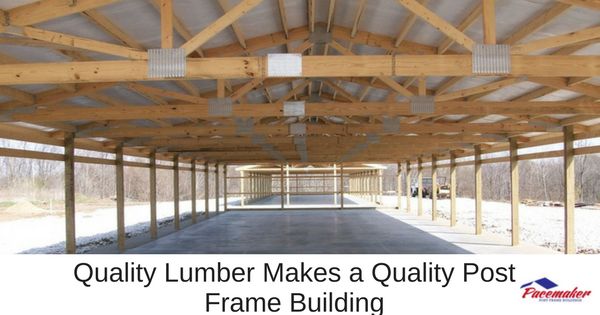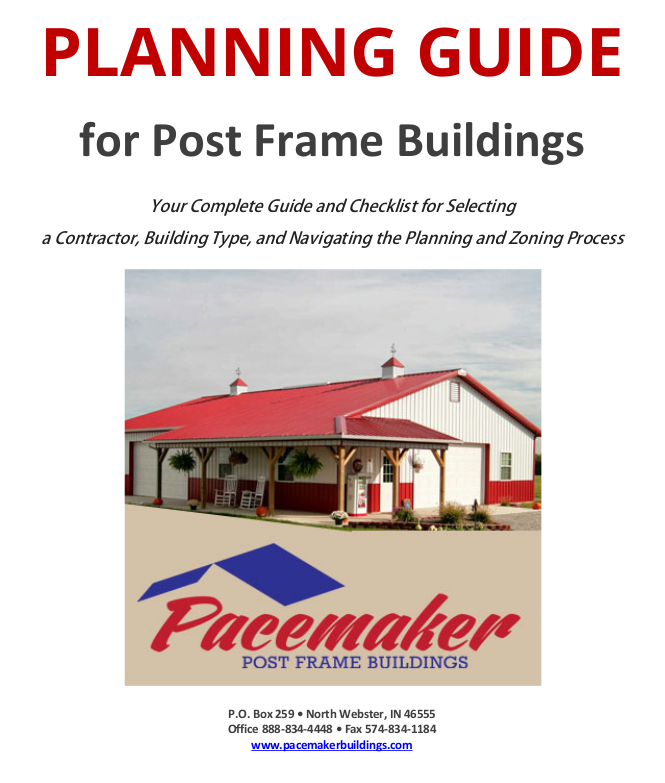 Because wood components are the essential elements of post frame construction, the quality of the lumber is critical. According to the Southern Pine Inspection Bureau (SPIB), a notable difference can exist between the two commonly used grading systems, Machine Stress-Rated (MSR) and Visual Grading.
Because wood components are the essential elements of post frame construction, the quality of the lumber is critical. According to the Southern Pine Inspection Bureau (SPIB), a notable difference can exist between the two commonly used grading systems, Machine Stress-Rated (MSR) and Visual Grading.
Why Must Lumber Be Graded?
In decades past, all lumber was produced from mature trees that seemed to yield little variation in quality. More recently, much of today’s lumber is harvested from tree farms raising fast-growing, less mature trees that result in higher levels of variability in the timber.
The National Lumber Grading Association has determined that today’s lumber is more widely varied in quality than in the past.
Historically, visual grading was the conventional method for evaluating wood. Variances were thought to be smaller as an inspector “sighted” along all four sides of each board to determine what grade a piece would be assigned.
Certain guidelines applied that defined each level. Characteristics like knots and holes, warp, bark, decay, machining defects, and bowing could affect each board’s assessment.
How is MSR Grading Different from Visual Grading
More recently, Machine Stress-Rated testing has become the norm for identifying the best quality wood products. Each piece of lumber passes through a machine that tests the strength and flexibility and even measures the density of the board.
The system reads how much stress the board can handle and assigns a machine stress-rated number. The system additionally measures the amount of force required to bend the piece a preset distance. Bending strength and density can vary among the various species of tree.
A visual override inspection is added to detect cosmetic flaws in the wood that may not hamper the performance but can affect the appearance.
Each MSR-graded board is stamped with a code that designates the bending value and stiffness. For example, the code 2400fb-2.0E means the unit is assigned a 2400psi design value with a stiffness of 2.0 million psi.
Obviously, this is a far more quantitative measurement than just a visual inspection.
Why is Proper Grading Important for Post Frame Construction?
The structure and stability of post frame structures depend largely on the integrity of their wood parts. Starting with the vertical laminated columns that support the entire roof structure, each component is engineered to fit precisely with almost no deviation.
These columns are sunk at a minimum embedment of four feet into the ground to provide stability to withstand high winds and other forces by channeling the energy into the ground. The trusses and other roof components are tightly designed with high-quality wooden members to supplement the integrated structure.
Three significant advantages of MSR grading are:
- Understanding the strength of the lumber is vital to ensuring the integrity of a long-lasting post frame building.
- Failure of the essential structural elements of a post frame building like trusses and vertical posts can create a failure. The parts of the structure are so tightly designed and engineered that the failure of one part can cause structural problems.
- No one wants to repair and replace unreliable parts after a major storm.
Contact Pacemaker for Information
Quality lumber makes quality buildings. The best-performing post frame building companies, like Pacemaker Post Frame Buildings, use only the highest quality, MSR-tested lumber for all of their post frame components.
The bottom line is that owners should make sure that only MSR-tested lumber is used for your building.
Pacemaker custom builds long-lasting and attractive post frame structures for auto dealerships, churches, schools, retail facilities, and even beautiful homes. For more information regarding the process of creating a post frame building for your home or workplace, contact Pacemaker Post Frame Buildings at 888.834.4448
